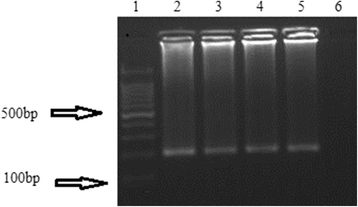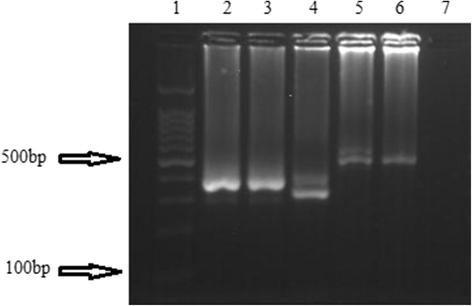Multiplicity of infection and genetic diversity of Plasmodium falciparum isolates from patients with uncomplicated and severe malaria in Gezira State, Sudan
- PMID: 27350250
- PMCID: PMC4924276
- DOI: 10.1186/s13071-016-1641-z
Multiplicity of infection and genetic diversity of Plasmodium falciparum isolates from patients with uncomplicated and severe malaria in Gezira State, Sudan
Abstract
Background: Multiplicity and genetic diversity of Plasmodium falciparum infection might play a role in determining the clinical outcome of malaria infection and could be a fair reflection of the disease transmission rate. This study investigated the genetic diversity of P. falciparum and multiplicity of infection in relation to the severity of malaria and age of patients in Gezira State, Sudan.
Methods: A cross-sectional health facilities-based survey was conducted in Gezira State, Sudan in January 2012. A total of 140 P. falciparum malaria patients diagnosed with microscopy and confirmed using nested PCR were recruited and classified into uncomplicated malaria and severe malaria states according to the standard WHO criteria. DNA was extracted and MSP1 and MSP2 allelic families were determined using nested PCR.
Results: The overall multiplicity of infection (MOI) was 2.25 and 2.30 and 2.15 for uncomplicated and severe malaria respectively. There were no statistically significant differences between uncomplicated and severe malaria (SM) patient groups in MOI with regard to MSP1, MSP2 and overall MOI (Mann-Whitney U-test; all P < 0.05). The predominant MSP1 allelic families were MAD20 for uncomplicated malaria and RO33 for severe malaria. The distribution of both FC27 and IC1/3D7 MSP2 allelic families were approximately the same across disease severity. One hundred and eleven P. falciparum isolates (81 %) consisted of multiple genotypes; 71/90 (78.9 %) in uncomplicated malaria and 40/50 (85.1 %) in severe malaria patient groups. Neither MSP1 nor MSP2 allelic families showed association with malaria severity. No statistically significant differences in multiplicity of infection were observed between different age groups.
Conclusion: In this study the majority of P. falciparum isolates from uncomplicated and severe malaria patients consisted of multiple genotypes. Further molecular epidemiological studies delineate the link between P. falciparum genotype with the malaria phenotype in different regions are encouraged.
Keywords: Genetic diversity; MSP1; MSP2; Multiplicity of infection; Plasmodium falciparum; Severity; Sudan.
Figures



References
-
- World Health Organization. World Malaria Report (2008–2015). Geneva. World Health Organization; 2015. Available in [http://www.who.int/malaria/publications/world_malaria_report/en/].
-
- World Health Organization. World Malaria Report (2008–2015). Regional and country profiles. Geneva. World Health Organization; 2015. Available in [http://www.who.int/malaria/publications/world-malaria-report-2015/wmr2015 profiles.pdf?ua = 1]
-
- Petrarca V, Nugud AD, Ahmed MA, Haridi AM, Di Deco MA, Coluzzi M. Cytogenetics of the Anopheles gambiae complex in Sudan, with special reference to An. arabiensis: relationships with East and West African populations. Med Vet Entomol. 2000;14:149–164. doi: 10.1046/j.1365-2915.2000.00231.x. - DOI - PubMed
MeSH terms
Substances
LinkOut - more resources
Full Text Sources
Other Literature Sources

